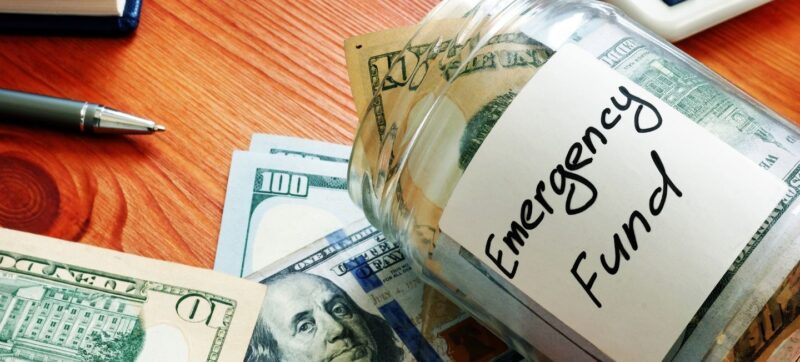An emergency fund serves as a cash buffer set aside for sudden expenses such as medical bills, car repairs, or income loss.
Having money reserved helps avoid debt and supports financial stability during stressful moments.
Even with a tight budget, small and steady contributions can create real protection over time.
Why an Emergency Fund is Essential

An emergency fund plays a major part in personal financial stability because life often brings expenses that do not fit into a normal monthly plan.
An unexpected bill can derail progress toward any goal if savings are not available to soften the impact.
A stronger foundation forms when a person prepares for surprises instead of reacting to them at the last minute.
Protection against financial shocks matters because unexpected expenses often arrive without warning. Minor issues like appliance repair or dental work can disrupt a monthly plan.
Income loss or reduced hours can create bigger pressure, especially when no savings exist.
High-interest debt increases financial strain, so relying on credit cards or payday loans makes problems harder to fix.
Peace of mind grows when a safety cushion exists, lowering stress during unpredictable events and building confidence.
Key benefits include several important points that highlight why an emergency fund deserves priority:
- Protection against sudden expenses that interrupt daily life
- Reduced reliance on high cost borrowing options
- More confidence during unstable moments
- Greater freedom to handle challenges without panic
Step-by-Step Strategies for Saving on a Small Budget

A solid plan becomes easier to follow when practical actions break the process into smaller parts.
Several strategies help stretch income and turn small amounts into growing savings over time.
Use Windfalls Wisely
Occasional extra income moments help accelerate growth.
Allocating parts of tax refunds, bonuses, or monetary gifts strengthens your fund quickly.
Extra income moments give a chance to grow savings without squeezing the regular budget.
Possible sources include:
- Tax refunds
- Cash gifts
- Work bonuses
- Small sales of unused items
To deepen your understanding of financial planning and stay informed on trends in leadership, private equity, and governance, visit Ned Capital News.
Track and Manage Cash Flow

A better picture of spending habits starts with honest tracking.
Monitoring income and spending reveals small gaps where money can shift into savings.
Adjusting bill due dates or updating spending habits improves control and reduces surprises.
Areas to review include:
- Subscription services
- Grocery spending
- Transportation costs
- Occasional impulse purchases
Start Small, Stay Consistent
Small amounts add up faster than most people expect.
Saving ten dollars each week creates momentum without adding pressure.
Apps or a simple journal help track progress and boost motivation.
Helpful reminders include:
- Celebrate small gains
- Review progress weekly
- Identify easy places to cut tiny amounts
Automate Your Savings
Automating the process removes the temptation to skip saving during slower weeks.
Automatic transfers move money into savings before it gets spent.
Employers often allow direct deposit splitting, making consistent saving easier.
Automation can include:
- Weekly or monthly transfers
- Round-up saving features in banking apps
- Employer-directed deposits
How Much Should You Aim For

A clear target helps create motivation, so setting a specific number makes saving easier.
Having a defined amount in mind gives structure to your plan and removes uncertainty about what you are working toward.
A simple starting point also helps reduce overwhelm, especially for anyone managing a tight budget.
A small starting goal works well because it feels reachable and encourages consistent progress.
A modest target allows you to build confidence while training yourself to save regularly. Every contribution, no matter how small, plays a part in creating momentum.
Larger goals come later once habits become strong and regular contributions feel natural.
Growth happens in stages, and saving becomes easier once you develop discipline and routine.
Progress becomes more visible when your early milestones are met, which makes expanding your target feel far less intimidating.
Starting with a goal of 500 to 1,000 dollars is manageable for most budgets and already creates meaningful support.
That amount provides a cushion for urgent expenses like car repairs or minor medical bills.
A quick solution becomes possible because you no longer need to scramble for high cost credit during tough moments.
Larger goals such as three to six months of living costs help cover income loss situations. That range gives you time to manage major disruptions like job loss or reduced work hours. A bigger fund allows breathing room while you search for a new opportunity or adjust your finances.
Budget calculators offered by organizations like Vanguard or MoneySmart assist in estimating monthly expenses and setting targets that feel realistic.
These tools help you see an accurate picture of spending patterns and identify the amount needed for your emergency cushion.
Many people find these calculators helpful because they simplify the math and reduce guesswork.
Where to Keep Your Emergency Fund

A safe and practical place for emergency savings plays a huge role in how effective the fund will be during urgent situations.
Money needs to stay protected while still being easy to reach when something unexpected happens.
A careful choice ensures that savings remain available without being mixed into daily spending, which reduces the temptation to use them for non-essential purchases.
A dependable storage place ensures that savings stay secure but still remain available when a real need arises.
A good balance allows fast access without placing money where it might be spent impulsively.
Choosing the right account helps keep the fund straightforward, organized, and ready to serve its purpose whenever required.
A separate savings account works well when it offers easy access and pays interest while still remaining slightly out of everyday reach.
An offset account linked to a mortgage can lower interest costs while keeping emergency cash available. Risky investments or long-term locked accounts might prevent fast access, so they are not ideal for sudden needs.
Keeping emergency money in accounts tied to stock markets, long lock-ins, or penalties can create problems during urgent moments, so simpler accounts often fit better.
A few reliable places provide the right mix of accessibility, safety, and growth potential. Smart storage options may include:
- High yield online savings accounts: These accounts normally provide better interest rates than standard banks.
- Traditional bank savings accounts: Conventional savings accounts offer stability and easy access through branches or mobile apps.
- Mortgage offset accounts: An offset account linked to a home loan reduces the amount of interest paid on the mortgage.
Final Thoughts
Building an emergency fund is possible on almost any income level.
Consistency, automation, and clear goals are key ingredients.
Starting with even five or ten dollars provides a foundation that the future you will appreciate.

